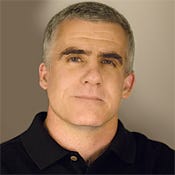IT organizations need to make the time for innovation, either formally or informally.

Every company says it wants to innovate, yet few know how to create an organization and culture to do it--drive it, fund it, measure it, and ultimately profit from it. Defining innovation is even a challenge. Must it spring from a lab or some other formal corporate organization, program, or process, or does most innovation happen more naturally as part of a creative and challenging work environment?
As I wrote in a recent column, the Obama administration wants to invest aggressively in the "innovation capacity" of the U.S., largely through federal funding of R&D and STEM education. But once the building blocks are in place--the feds will spend more than $140 billion this year on R&D and another $3.4 billion on STEM programs--innovation must flourish at a corporate, team, and even individual level. And unless you're an R&D-intensive company like Intel, Pfizer, Procter & Gamble, or General Dynamics, your innovation capacity is probably less than buttoned up.
Procter & Gamble CEO Bob McDonald is pushing the consumer goods giant toward more "discontinuous innovation"--products and technologies that create entirely new brand categories and capabilities rather than just improve existing products. Former Cisco exec Jayshree Ullal, CEO of 10-Gigabit Ethernet startup Arista Networks, makes the case that big tech vendors are "trapped into incrementalism," a critique that could be applied to most IT organizations today.
[ Learn important lessons. Read The New IT Rulebook: Not For The Faint Of Heart. ]
To break out of that mold, some companies have created special IT-centric innovation groups. ADP, for example, last year set up an innovation lab that consists of four or five permanent people, including innovation experts it brought into the company, and another 15 to 20 IT pros who rotate into and out of the lab in six-month cycles. CIO Mike Capone told my colleague Chris Murphy that he'll keep the team grounded in the pressing needs of ADP's business and customers, urging team members to think in terms of six- to 12-month cycles for prototype projects.
A dedicated labs team at FedEx develops technology whose returns might not pan out for years, but more important, CIO Rob Carter says, is the culture of innovation that pervades the company's IT organization. FedEx Mobile on the iPhone wasn't conceived in a lab, he says, but was developed by the same IT pros who build the company's Web services-based shipping apps.
At a panel session on IT-led innovation at last spring's Interop trade show, several CIOs weighed in on the pros and cons of creating special teams for that purpose. Panel leader Thornton May, executive director of the IT Leadership Academy at Berkeley's Haas School of Business, warned that elite IT teams handed their companies' innovation responsibilities can drift into the ivory tower. Such teams "are loathed by the people who actually run the company," May said.
But several CIOs at that session lamented that they and their people often get too caught up in day-to-day operations to focus on bigger, more innovative projects--a trap I warned about in my top 10 CIO priorities (see No. 3). As InformationWeek's Charlie Babcock related in a story on the Interop session, one veteran CIO was particularly blunt. "We become pretty heavily overwhelmed at times," said Bruce Barnes, CEO of management consulting firm Bold Vision and CIO emeritus of Nationwide Financial Services. "We need a 48-hour day and it's not gonna happen. We're so focused on the here and now, we can't get a focus on what's next. We ought to be the John F. Kennedy looking down the road to see where we're going."
"The Innovative CIO"
With an eye toward helping CIOs explore their own New Frontiers, two prominent CIOs--Dave Smoley of contract manufacturer Flextronics and Brian Lillie of data center operator Equinix--have teamed with Stanford University to create a program called "The Innovative CIO: Leadership, Innovation, and Global Change."
 Global CIOs: A Site Just For You Visit InformationWeek's Global CIO -- our online community and information resource for CIOs operating in the global economy.
Global CIOs: A Site Just For You Visit InformationWeek's Global CIO -- our online community and information resource for CIOs operating in the global economy.
To run three days starting March 13 on Stanford's campus, the program is organized around three themes. Day one is about understanding global political and economic trends and their relationship to tech trends. Day two is more practical, focusing on tools for nurturing innovation--rapid prototyping, design thinking, gaming, etc.--and includes a half day working with experts at Stanford's Institute of Design. The last day emphasizes how to change leadership and organizational behavior to nurture an innovation culture: psychology, power, influence, and relationships.
The three-day program includes classroom sessions with Stanford faculty, keynote presentations from prominent authors and industry figures, and discussion panels with innovation strategy experts and venture capitalists.
"Over the past five years since I moved to Silicon Valley to be CIO at Flextronics, I have been constantly amazed at the innovative spirit and culture here," says Smoley, who's also on the InformationWeek advisory board. "For a tech leader, working in Silicon Valley is like being a kid in a candy store. In discussions over the years with my CIO peers from around the world, it seems that there's a real desire to understand and capture that Valley innovation spirit and bring it back to their enterprise." The Innovative CIO program will try to do just that.
This highly interactive program is designed for senior-level IT executives at global companies with at least 10 years of management experience. Tuition is $7,500, including private accommodations, meals, and course materials. For more information, go to the Stanford program's website.
About the Author(s)
You May Also Like







